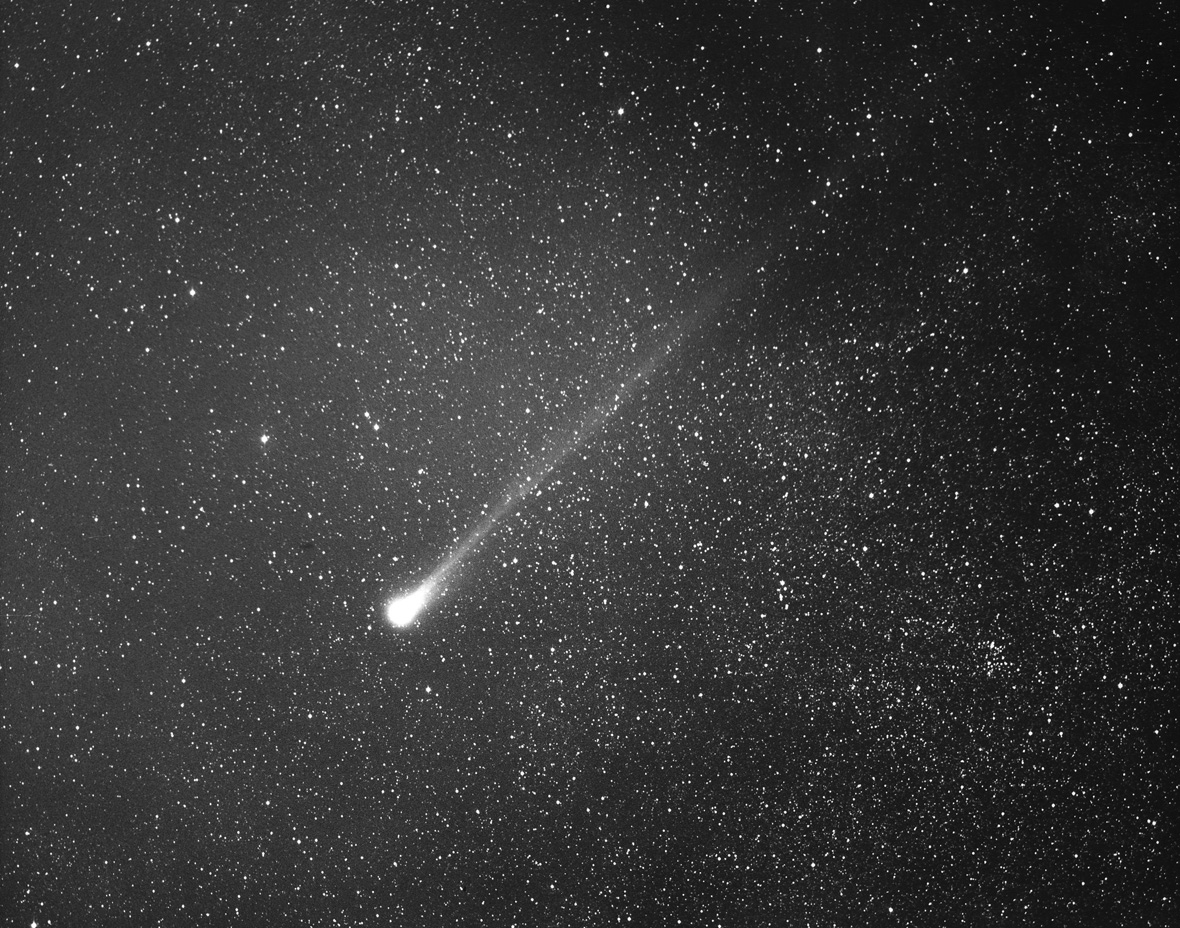

COMET OF THE WEEK
WEEK 49: NOVEMBER 29 -- DECEMBER 5
COMET 109P/SWIFT-TUTTLE 1992t
Perihelion: 1992 December 12.32, q = 0.958 AU
One orbital period after 1862 brings us to the early 1980s, and in fact detailed calculations predicted a perihelion passage sometime around mid-1981. In the early 1970s, meanwhile, Brian Marsden -- later the Director of the IAU’s Minor Planet Center -- took a different tack and tried to identify previous returns of Comet Swift-Tuttle. One semi-promising candidate -- which had initally been proposed by the British amateur astronomer William Lynn in 1902 -- was a comet observed from China in July 1737 by the Jesuit missionary Ignatius Kegler. There were several problems

The early 1980s came and went without any sign of Comet Swift-Tuttle, and subsequently attention turned more strongly towards Marsden’s prediction, especially after unusually strong bursts of the Perseids – to rates briefly as high as 450 meteors per hour – were observed during the 1991 and 1992 showers. Finally, on September 26, 1992, a Japanese amateur astronomer, Tsuruhiko Kiuchi, discovered a 10th-magnitude comet near the “bowl” of the Big Dipper which soon proved to be none other than the long-awaited Swift-Tuttle. This showed that Kegler’s comet from 1737 was indeed Swift-Tuttle, and Marsden’s prediction turned out to be only 17 days off.
The viewing geometry was not especially favorable in 1992, with the comet remaining relatively far from Earth: the minimum distance was 1.16 AU on November 8. It nevertheless reached a peak brightness of 5th magnitude during November and December and displayed a moderately bright tail a few degrees long during that time. After disappearing into evening twilight in late December it was picked up from the southern hemisphere as a 9th-magnitude object in late February 1993, and subsequently followed with large telescopes for the next two years as it receded from the inner solar system. There was a moderately strong display of Perseid meteors in 1993 and some enhanced activity in 1994, but ever since then the Perseids have returned to the strength that they’ve always regularly exhibited.

 Comet 109P/Swift-Tuttle in 1992. Left: November 27. This was the approximate telescopic appearance around that time. Courtesy Chris Schur in Arizona. Right: December 15. Courtesy Michael Jaeger in Austria.
Comet 109P/Swift-Tuttle in 1992. Left: November 27. This was the approximate telescopic appearance around that time. Courtesy Chris Schur in Arizona. Right: December 15. Courtesy Michael Jaeger in Austria.

A long-term study of Swift-Tuttle’s motion by British astronomer John Chambers published in 1995 indicates that there will continue to be close approaches to Earth during subsequent millennia, until on September 14, 4479, Swift-Tuttle will pass so close to Earth that it is not possible to make accurate predictions of its future motion past that point; Chambers estimates the possibility of a collision as perhaps being one in a million. Even if there is no collision, the comet will continue making occasional close approaches to Earth, and this fact, together with its large size and the large relative velocity between it and Earth – which in turn would liberate an enormous amount of kinetic energy should an impact ever take place someday – means that Comet Swift-Tuttle can probably quite accurately be described, as one of the editors at Sky & Telescope magazine once put it, as “the single most dangerous object known to humankind.”
“Comet of the Week” archive
Ice and Stone 2020 home page
Earthrise Institute home page